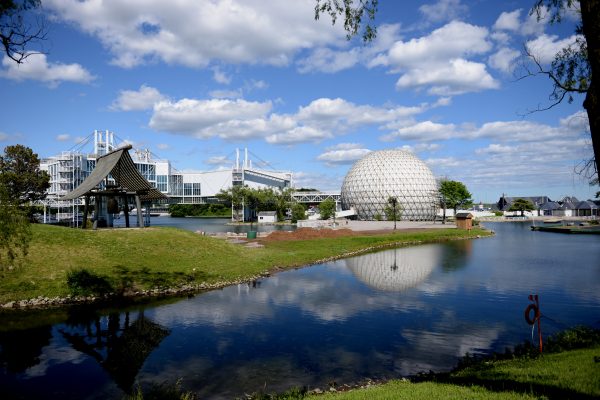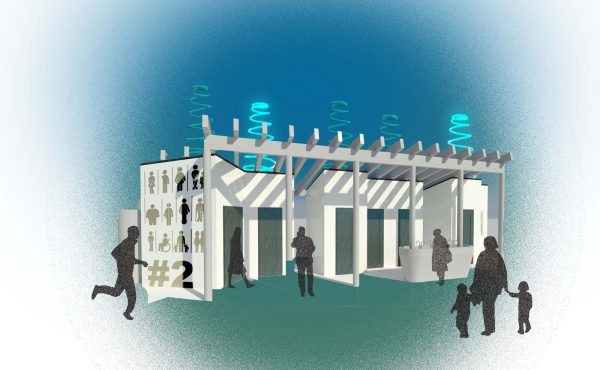
Here’s a question for the women and men positioning themselves for a run at the mayor’s chair: Do you think Therme’s proposed $350 million mega-spa and accompanying underground mega-garage represent an appropriate re-use of the Ontario Place lands, or is this a generational mistake that squanders some of Toronto’s most valuable waterfront park space, not to mention an epic amount of public funding?
To be clear, I’m looking for answers from current and former councillors Josh Matlow, Brad Bradford, Ana Bailão, as well as Liberal MPP Mitzie Hunter, who served in cabinet for the years during which her government could have, but didn’t, take action. (Gil Penalosa and Chloe Brown are also running, and both have expressed their opposition to Therme’s plan.)
To be even more clear, whoever wins the big prize on June 26 will have to cast votes on this boondoggle of a scheme. The city has received a formal application from Infrastructure Ontario to amend the zoning bylaw and the official plan to allow Therme — which seems to have cranked up its PR machinery in recent weeks — to construct what will be an eight or nine-story human aquarium, accessible exclusively to those willing and able to pay to enter this wellness wonderland.
According to a timetable set out by Queen’s Park, the applications, which are going through a technical analysis and a consultation period, will be formally vetted by council later this year. Former mayor John Tory, who led an Ontario Place task force a decade ago, seemed perfectly content to let the Ford government lease a large swath of this park to a company that has not once revealed the source of its funding. But will the next mayor be as compliant?
While the province has the ability to trump whatever council decides, Queen’s Park has claimed it will abide by the planning approvals process. And regardless of what the Ford government decides, the views of the next mayor will matter, a lot. And so we need to know what those views are.
Certainly, the three potential candidates with council experience should, at least on paper, get why this plan stinks.
Matlow hears constantly from his mid-town constituents about the need for more public space in those parts of his ward experiencing high-density growth.
Bailão, in turn, represented Davenport, which historically has had the lowest proportion of park space of any ward in the city.
Bradford, for his part, is a veteran of Toronto’s planning department. He, of all people, knows that in the area where the city’s intensification efforts are bringing the most population density, there’s an urgent planning case to be made for protecting all available park space.
The good-planning arguments, of course, don’t stop there. At a time when land use policy increasingly aligns with investment in mass transit, the province’s decision to situate a massive underground parking garage (with covered connections to the spa) just a few hundred metres from the eventual terminus of the Ontario Line is perverse.
Imagine if, in the mid-1980s, Metro and the provincial government had insisted on ringing SkyDome with hectares of parking instead of connecting it to Union Station? It’s shocking to consider that a current generation of political leaders managed to unlearn those lessons from almost two generations ago. The poverty of the Ford government’s thinking is particularly blinkered in this period of global warming. I’d hope the Tories’ utter indifference won’t be parroted by whomever becomes chief magistrate of a city that has declared a climate crisis.
Earlier in the winter, I spoke with designer Kelly Alvarez Doran, an adjunct professor at the University of Toronto’s faculty of architecture, about the climate implications of that garage, which will house over 2,100 parking spaces and cost almost $400 million. The architectural firm designing it is BDP Quadrangle, whose website includes a video about low carbon design.
Doran in recent years has researched the sources of carbon, both operational and embodied, in various types of buildings. His data shows that over half of the emissions generated by a typical mid-rise apartment come from the concrete required to pour the foundation for the basement — the so-called bathtub.
The carbon in the concrete, he adds, is only half the emissions story. Because it will be constructed entirely below the water table, the garage will require sump pumps to operate in perpetuity. A huge amount of energy will be required to run those systems, plus ventilation. “Of anywhere to build an underground parking garage, in a lake is the most consequential,” Doran states. “This is insane because it’s public money.”
There is still much professional and technical assessment to be done on the Therme project and the parking garage — the joint City of Toronto/Waterfront Toronto design review panel has yet to take a more intensive look at the public space plan and the built form. The City’s planning department, as well as officials in other divisions including transportation, are continuing to work their way through the massive rezoning and development application. The provincial auditor-general might even get into the act, if the NDP’s request for a review is accepted.
Eventually, this thing will land at council, and it will fall to the next mayor to decide whether or not to call out the Therme/garage fiasco as bad for the city — an inexcusable privatization of one of Toronto’s pre-eminent public spaces, and a place that has acquired a renewed importance in the life of a downtown where park land becomes increasingly sought-after with each new high-rise.
Unlike our former mayor, the six likely candidates aren’t rich (as far as I know). They probably don’t own luxurious private recreational homes. They likely use public space. Their work as ward councillors (and, in the case of Bradford, as a planner) should have made them aware of why a great public park in a rapidly densifying city is such a precious commodity. At the same time, Bailão and Bradford have already lined up Ford government insiders and spin doctors to work on their as-yet unannounced campaigns.
So back to my question: Where do they stand on the future of Ontario Place?
Ask them.
photo by John Bauld





One comment
There’s also the carbon cost when the cars parked in the garage are lost to the inevitable floods. It’ll be an underground lake during every major storm. Will insurance even cover the cost if you lose your car in a flood of a garage built essentially underwater? The only thing more ridiculous than driving through the congestion by the lakeshore is choosing to park in a submergeable garage once you’re there.